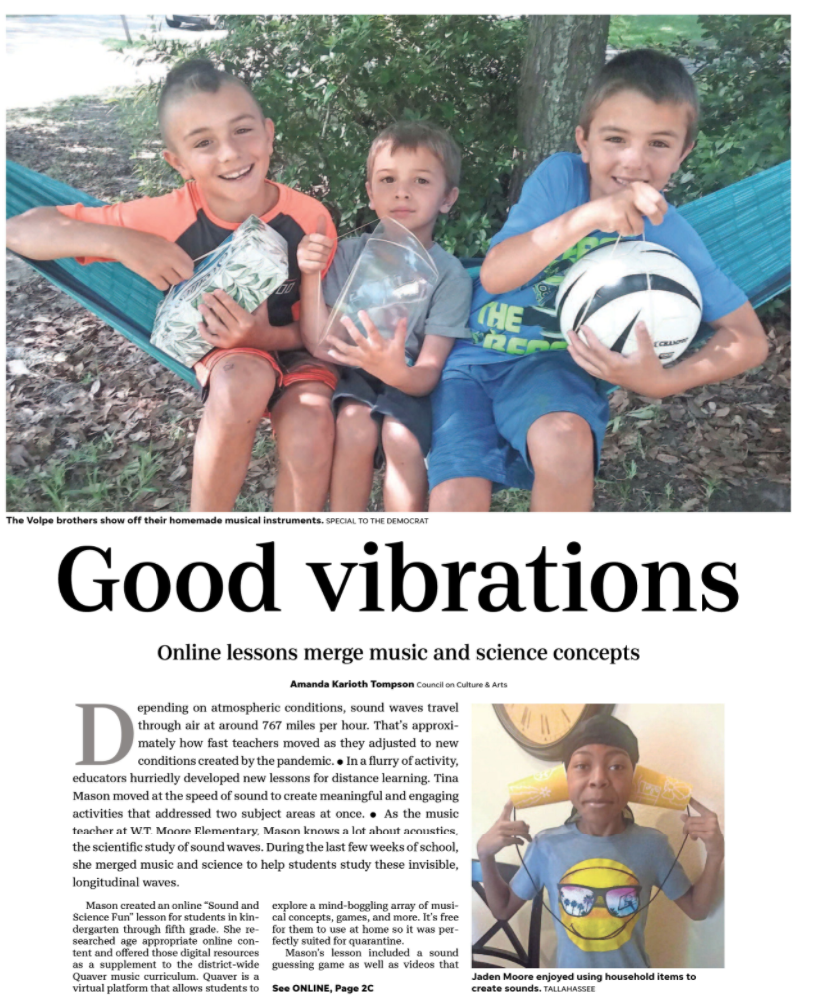
Depending on atmospheric conditions, sound waves travel through air at around 767 miles per hour. That’s approximately how fast teachers moved as they adjusted to new conditions created by the pandemic.
In a flurry of activity, educators hurriedly developed new lessons for distance learning. Tina Mason moved at the speed of sound to create meaningful and engaging activities that addressed two subject areas at once.
As the music teacher at W.T. Moore Elementary, Mason knows a lot about acoustics, the scientific study of sound waves. During the last few weeks of school, she merged music and science to help students study these invisible, longitudinal waves.
Mason created an online “Sound and Science Fun” lesson for students in kindergarten through fifth grade. She researched age appropriate online content and offered those digital resources as a supplement to the district-wide Quaver music curriculum. Quaver is a virtual platform that allows students to explore a mind-boggling array of musical concepts, games, and more. It’s free for them to use at home so it was perfectly suited for quarantine.
Mason’s lesson included a sound guessing game as well as videos that explained sound waves, vibrations, and ear anatomy. She challenged students to explore cymatics by conducting sound experiments that made sound vibrations visible.
Students watched what happened to rice grains that were placed on a baking pan and held near speakers while music played. They learned these sound vibrations manipulated the grains of rice and, the higher the sound wave frequency, the more the rice moved.
The students then applied their new knowledge of acoustics to the creation of their own musical instruments. Using common items like empty cans and cardboard boxes, they built simple, creative, and effective music makers.
“I enjoyed learning that I can use everyday household items to make music and create sounds,: Fourth grader Jaden Moore said. “My favorite thing was learning that I could make a phone using drinking cups and a shoestring. I was surprised it actually worked.”
Fourth grader Canaan Volpe also had fun making a phone from cups while his second-grade brothers Michael and Nicolas Volpe experimented with the music making properties of rubber bands. Kindergartener Chloe Anderson opted for a minimalist approach and said, “we made music using glasses of water and I would sing and made different sounds with my voice.”
Read the rest of the story by visiting the Tallahassee Democrat
or read more by downloading the article here